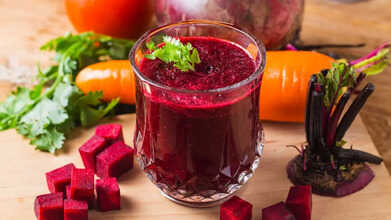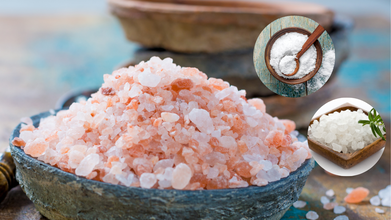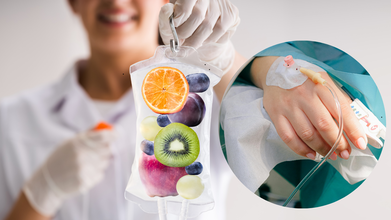- Health Conditions A-Z
- Health & Wellness
- Nutrition
- Fitness
- Health News
- Ayurveda
- Videos
- Medicine A-Z
- Parenting
- Web Stories
Not Just Eggs, This Cheese Has Even More Protein

(Credit-Canva)
Protein helps your body turn food into energy, which is important for your metabolism. It can even help lower your blood pressure and help you heal faster if you get hurt. So, whether you're working out, trying to stay healthy, or just going about your day, getting enough protein is essential for your body to work its best.
While we were led to believe that cheese is not a source of nutrition, studies have shown that there are many benefits to eating cheese. What many people don’t know is that cheese is also a healthy source of protein, and you will be surprised to know many of them have protein even more than an egg! Certain types of cheese have more protein than eggs! This particular cheese is one of the most accessible ones- Cheddar Cheese.
Cheddar cheese contains almost 7 grams of protein per ounce. While other cheeses like Parmesan and Romano have higher protein content, cheddar is more widely available and has a milder taste. You can find it in most grocery stores, making it an easy way to increase your protein intake.
Nutritional Value Of Cheddar Cheese
Cheddar cheese isn't just about protein. It's also packed with calcium, which is super important for keeping your bones strong and healthy. Strong bones help you stay active and prevent breaks as you get older. Cheddar also has vitamins A and K, which are good for your eyes and blood clotting, and iron, which helps carry oxygen in your blood. And surprisingly, even though cheese has fat, it might help lower your "bad" cholesterol. Scientists think this might be because of all the calcium in cheese. So, eating cheddar not only gives you protein but also a bunch of other good stuff that helps your body stay healthy. Nutritional benefits of cheddar cheese are as follow,
- Rich in calcium, essential for bone health and blood clotting.
- Provides iron, vitamin A, and vitamin K.
Macronutrient Breakdown
- 69 calories
- 4 grams of protein
- 6 grams of fat
- Less than 1 gram of carbohydrates
Is Cheese Beneficial for Overall Health?
In America, cheddar cheese is a true favorite, often topping lists of preferred cheeses. Even though mozzarella is eaten more these days, cheddar is still super popular for snacks and cooking. This cheese got its name from a small town in England called Cheddar, where it was first made way back in the 1000s. Making cheddar is like making other cheeses: you start with milk and a special ingredient, then get rid of the extra liquid. What's left gets heated, pressed, and shaped into blocks. These blocks then sit for a while, getting tastier as they age. While you may not know, it has a lot of benefits!
Dental Health
Eating cheddar helps your teeth stay strong because it has things that make them tough. It also stops bad stuff in your mouth that can cause holes in your teeth, like when you eat too much candy. This is because it helps keep your mouth's acid levels just right.
Potential Sleep Aid
Some people think eating a little cheddar before bed can help them sleep better at night. While the science isn't totally sure, it might be because a small amount of cheese can be a calming snack before you go to sleep, like a warm drink. It is a comforting food.
Snacking
Cheddar is easy to eat as a snack, and it goes well with many things. You can eat it with crunchy crackers, or you can have it with sweet fruits like grapes or apples. This makes it a simple and tasty way to get some good food between meals.
Meal Incorporation
You can put cheddar into many of your favorite meals to make them taste better. It melts easily, so you can put it in macaroni and cheese, or make a warm grilled cheese sandwich. Also, you can mix it into hot soups to make them creamy.
Cooking
Because cheddar melts well and doesn't have a very strong taste, you can use it in lots of different cooking. You can try putting it in new recipes and see what you like. It lets you be creative in the kitchen and make new tasty food.
ABC Juice: This Everyday Drink Could Be Your Secret Health Weapon, Nutritionist Explains How

Credits: Canva
Drinking juice is a simple and enjoyable way to add vital nutrients to your daily diet. Many people like to kickstart their mornings with a glass of fresh juice, whether it’s the popular green juice or the classic orange juice. Among the wide variety of wellness drinks, ABC juice has carved a niche for itself, offering health benefits that many other beverages can’t match. We spoke with Lena Bakovic, an experienced Registered Dietitian Nutritionist with over eight years in the field at Top Nutrition Coaching, who shared the many advantages of including ABC juice in your routine.
What Is ABC Juice?
According to Lena, ABC juice combines raw apples, beetroots, and carrots, creating a drink packed with essential nutrients. It offers fibre, antioxidants, and several micronutrients, including potassium, zinc, and iron. Here’s a closer look at each ingredient:
- Apple: Apples are loaded with fibre, vitamin C, potassium, and vitamin E. They support digestive health, promote heart health, and can help with weight management.
- Beetroot: Beetroots are nutrient-rich while being low in calories. They provide folate, fibre, vitamin C, potassium, iron, and even a small amount of protein.
- Carrot: Carrots are a great source of vitamin A, essential for healthy eyesight. They also contain potassium, vitamin B6, biotin, fibre, and vitamin K.
Benefits Of ABC Juice
Lena told us that ABC juice is generally low in calories, making it ideal for those keeping an eye on their weight. Its fibre content supports gut health, aiding digestion and overall intestinal function. The iron in the juice can also be helpful for those with iron deficiency anemia, potentially helping to replenish iron stores.
Additionally, the antioxidants in ABC juice may help fight free radicals, which in excess can contribute to chronic conditions like cardiovascular disease and certain cancers. While the juice’s nutrient richness may support immune health, strong scientific evidence is lacking. Similarly, claims that ABC juice boosts metabolism are not yet backed by robust clinical trials.
How To Make ABC Juice
Making ABC juice at home is easy and requires just a few simple steps. Here’s the method:
Ingredients:
- 2 apples
- 1 medium beetroot
- 2 carrots
- Optional: a splash of lemon juice or a small piece of ginger for extra flavour
Instructions:
- Rinse the apples, beetroot, and carrots thoroughly.
- Peel the beetroot and carrots.
- Remove the cores from the apples and chop them into smaller pieces.
- Cut the beetroot and carrots into chunks.
Juicing:
- Using a juicer: Feed the apple pieces, beetroot chunks, and carrot pieces into the juicer, collecting the juice in a container.
- Using a blender: Add the chopped apples, beetroot, and carrots to the blender. Blend until smooth, adding a little water if needed. Then strain the mixture through a fine mesh sieve or cheesecloth to separate the juice from the pulp.
- Add Optional Ingredients: Mix in a bit of lemon juice or a small piece of ginger for extra flavour if desired.
Serve:
Pour the juice into a glass and enjoy immediately to get the best taste and nutritional benefits.
Storage:
Any leftover juice can be kept in an airtight container in the fridge for up to 24 hours.
Enjoy your refreshing, nutrient-packed ABC juice!
Pink Salt, Sea Salt, Celtic Salt: Are They Really Beneficial Or Just Some Fancy Names

Credits: Canva
Social media platforms have taught us a lot about health, but sometimes, it has also tricked us into believing things which may not be in the best interest of us. Now, we are hearing more and more about the trend of using Himalayan salt and replacing the table salt, which we would commonly use. For some, using this salt in beverage helps them lose weight. While for others, the variants like Celtic salts and seat salts are mineral-rich alternatives. However, doctors say otherwise.
What Is The Reality of Pink Salt, Sea Salt And Celtic Salt?
Celtic Salt is unrefined and non-processed salt without harsh chemicals or anti-caking agents. It naturally contains a wide array of minerals, including magnesium, calcium, potassium, zinc, and iron, in addition to sodium chloride.
While sea salt has the same mineral compounds, it is more dry in nature and has more variation in texture, from ultra-fine grains to large, and even flaky crystals.
Pink salt or Himalayan salt is a type of rock salt, which is mined from Khewra Salt Mine in Pakistan, and is known for its distinctive pink hue from trace minerals like iron and potassium. It is natural, unrefined, and is known for the mineral-rich component that it is.
However when doctors are asked whether such unrefined, raw, and mineral-rich salt should be substituted for the regular table salt, their answer is "No".
Dr Shipra Gulati, consultant physician at Sir Ganga Ram Hospital said that any form of rock salt, while rich in mineral, is associated with thyroid problems. Why? Because these salts lack iodine, which is present in common salt. Absence of iodine leads to thyroid problems, notes the World Health Organization (WHO). This is why the government of many countries have iodised the salt so thyroid issues could be prevented. When one substitutes any other salt with regular iodised salt, then the risk to thyroid, brain damage and mental retardation increases.
What About Blood Pressure?
Dr Gulati also cites examples of where people replace rock salt with regular table salt stating hypertension reasons. However, she says, "the component of sodium chloride is same in both the salts". Thus, replacing the salt will not be fruitful.
What About The Minerals?
Health guidelines by American Heart Association suggests the upper limit is 2,300 mg, which is roughly 1 teaspoon a day. Experts point out that in order to actually utilise the minerals present in other salts, one must consume more than the recommended levels of salt, as consuming just 1 teaspoon a day will not make any difference in terms of the minerals. However, if more than this amount is consumed, it could trigger high blood pressure, as sodium chloride are almost same for all the salts.
Dr Susan Cheng and Dr Evan Levine, two cardiologists, reported by Today.com noted that using too much "fancy" salts could be more detrimental to your health.
Dr Cheng says that coarser texture from rock salt, Celtic salt or sea salt and their larger crystal could make it simple to unknowingly overuse them. "The satisfying crunch makes you feel like you're using a little bit, but really you're adding a lot of extra sodium."
Dr Levine suggests: "Don't fall for the salt hype". Dr Levine also bursts health myths on TikTok and says that many people consume the alternatives for being "less processes". However, "it is sodium chloride, just like your regular salt. The so-called benefits are negligible. You are still eating salt."
IV Hydration For Vitamins Could Be Putting Your Life At Risk, According To Doctors

Credits: Canva
While more and more IV hydration spas are coming up in the US, a new study published on October 6 in JAMA Internal Medicine found that IV hydration industry operates with almost no regulation and little medical evidence to support its supposed health benefits.
The co-author of the study Dr Peter Lurie, who is the president of the Center for Science in the Public Interest told the NBC News that these businesses are operating "almost completely without evidence. As a result there is a real danger to consumers".
In the US, out of the 50 states, or 32 have some kind of rule or policy related to IV hydration services, however, only four states: Alabama, North Carolina, South Caroline and Vermont have a comprehensive oversight. These hydration spas offer pricey vitamin infusions that promise energy, detox or immune support. Apart from the lack of evidence to sustain its claim on the benefits IV hydration supposedly offers, it is also an expensive process. According to the American Med Spa Association, this industry has exploded into a $15 billion wellness industry.
Is it really worth it?
Here is what the doctors say about IV hydration:
Dr Shrey Kumar Srivastav, Senior Consultant, Internal Medicine at Sharda Hospital told Health and Me that while there is no standard frequency for IV therapy in healthy individuals, "frequent or routine use can cause vitamin toxicity or electrolyte imbalances."
Dr Prashant Sinha, Head of Emergency and Internal Medicine at PSRI Hospital, Delhi, said that for a healthy person with no diagnosed deficiency, there is generally no medical reason to receive IV supplements regularly. "Getting them too frequently can lead to nutrient overload or dependency, where the body becomes less efficient at natural nutrient absorption," he pointed out.
Both the doctors also debunk the claim that IV supplements are better than the vitamins one consumes through food. "Supplements taken orally or through food are typically safer, more sustainable, and sufficient for most people," explained Dr Srivastava.
Also Read: If You're Alone At Home And Experience A Heart Attack, Here's How You Survive: According To Doctor
Dr Sinha also clarified that IV supplements are in most cases not better than supplements consumed through food or medicines. "Whole foods provide not only individual nutrients but also fiber, antioxidants, and enzymes that support overall health. Oral supplements, when taken as prescribed and for medically confirmed deficiencies, are also effective for most people and pose far fewer risks than IV therapy," he points out.
Dr Srivastava further added that IV supplements are not superior to food or oral supplements for general wellness or weight loss. "The growing trend of using IV injections for cosmetic or slimming purposes is risky, unregulated, and can be fatal."
Lurie also said, "This is a medical system that exists largely outside of conventional medicine. We are also worried that there will be adverse effects related to this."
Alex Thiersch, the CEO of the American Med Spa Association said that many of the owners of these businesses do not realize that they are practicing medicine, however he notes, "If you are putting a needle in someone's vein, that's 100% medical practice."
© 2024 Bennett, Coleman & Company Limited

